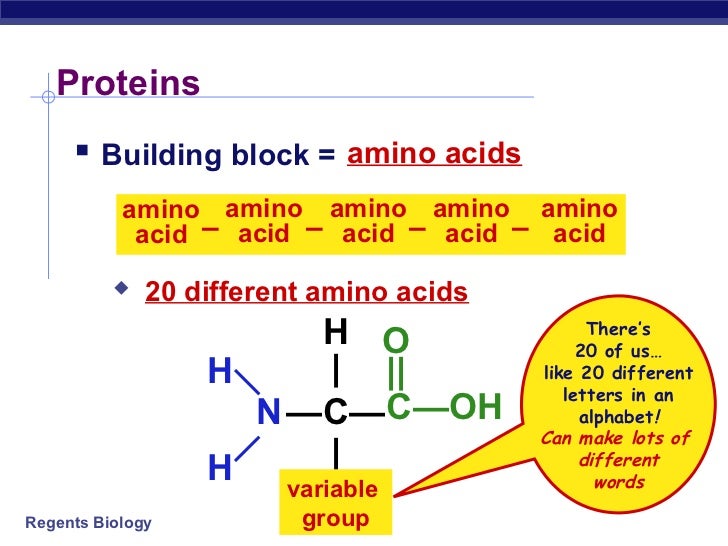
It is the precise, compact structure and is unique to the protein, and arises when the protein molecule is further folded and held in a particular complex shape.These shapes are permanent, and held in place by Hydrogen bonds.The most common shapes are formed by coiling to produce α-helix folding to produce β-sheets.Parts of the chain become folded, and/or twisted, in many different ways.It develops when part of the polypeptide chain take a particular shape, immediately after the formation at the ribosomes.AA1 AA2 AA3 AA4 AA5 AA1 AA6 Different function from previous AA!!! When one amino acid in the sequence of the protein is changed, the properties of the protein may change completely. In the living cell, the sequence of the amino acids in the polypeptide chain is controlled by coded instructions stored in DNA of nucleus.Proteins differ in the variety, number and order of their constituent amino acids.The primary structure of a protein, is the arrangement of the long chain of amino acids in the protein molecule.The structure of ProteinsPrimary Structure Purple colouration occurs when there are peptide bonds present.To a solution thought to contain protein, and equal volume of Sodium Hydroxide is added and mixed, and a few drops of 0.5% Copper(II) Sulfate solution is introduced with gentle mixing.It is used as an indicator of the presence of protein, and gives purple colouration in the presence of peptide bonds.The terms ‘polypeptide’ and ‘protein’ are used interchangeably, but when the polypeptide has about 50 amino acid molecules long, it is considered as a protein molecule.Polypeptides are long strings of amino acids that are linked by peptide bonds.The amino group of one amino acid reacts with the carboxyl group of the other amino acid and hence a peptide bond is formed.When 2 amino acids react with each other, and water is lost, a dipeptide is formed.Some others that have additional amino groups are known as the basic amino acids.Some amino acids have the additional carboxyl groups, and hence they are given the name of acidic amino acids.Once the chain of amino acids are constructed, they take a specific shape and it is closely related to its function.Īmino acids carry a basic amino group and an acidic carboxyl group.They are formed from amino acids, linked by a long chain and hence are huge molecules.The main difference between proteins and other biological molecules is the presence of the element Nitrogen (and sometimes Sulfur and Phosphorous).About two-thirds of the total dry mass of a cell is made up of proteins.Don't worry, that's just because the 21st one was discovered pretty recently and not all the books have caught up yet.Name: Perry Peh Bing Xian Class: 3S2 Assignment: Biology ACE – PPT Amino AcidsThe building blocks of proteins BI ACE_02 You may see books that say there are only 20 amino acids.

Because amino acids can be arranged in many different combinations, it's possible for your body to make thousands of different kinds of proteins from just the same 21 amino acids. The human body uses just 21 amino acids to make all the proteins it needs to function and grow. You can also combine multiple strands of amino acids to make even bigger protein shapes. Other chains make zigzag sheets, and loops.Ĭombining these spirals, sheets, and loops is how the three-dimensional shape of the protein is made. These chains of amino acid building blocks can then fold into all types of shapes. To build a protein, first the amino acids are connected into long chains. These building blocks are called amino acids. Just like a Lego house is made of bricks, proteins are made up of lots of tiny building blocks.

Johnson Righeira Lego portrait via Wikimedia. Proteins are not the same as Lego building blocks, but proteins do have special shapes that can be used to build parts of the body.


 0 kommentar(er)
0 kommentar(er)
